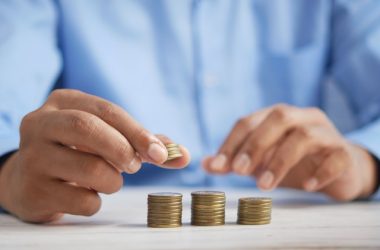Financial stability is a fundamental aspect of well-being, but for a significant portion of the American population, it remains elusive. Living paycheck to paycheck has become a stark reality for many individuals and families across the United States. In this in-depth analysis, we will explore the extent of this issue, the factors contributing to it, and the consequences it carries for millions of Americans.
The Prevalence of Living Paycheck to Paycheck
Living paycheck to paycheck is a term used to describe a financial situation where individuals rely on each paycheck to meet their immediate financial obligations, leaving little to no room for savings or unexpected expenses. This precarious financial position has become increasingly common in the United States.
- Federal Reserve Data: According to the Federal Reserve’s Report on the Economic Well-Being of U.S. Households in 2020, approximately 37% of American adults would struggle to cover an unexpected expense of $400 without borrowing money or selling assets. This startling statistic highlights the fragile financial position of many Americans.
- CareerBuilder Survey: In a survey conducted by CareerBuilder in 2019, it was found that a staggering 78% of American workers were living paycheck to paycheck. Moreover, 25% of respondents reported that they couldn’t make ends meet at the end of the month.
- Bankrate’s Financial Security Index: Bankrate’s Financial Security Index, updated in 2021, indicated that 25% of Americans had no emergency savings whatsoever. This lack of savings leaves individuals vulnerable to unexpected financial shocks.
Factors Contributing to Living Paycheck to Paycheck
Several interconnected factors contribute to the prevalence of living paycheck to paycheck among Americans:
- Low Wages: Despite overall economic growth, wage stagnation remains a significant issue. Many workers are trapped in low-paying jobs that fail to keep pace with the rising cost of living.
- Rising Cost of Living: The cost of essential goods and services, including housing, healthcare, and education, continues to outstrip income growth in many regions. Housing costs, in particular, have surged, making it difficult for individuals to allocate funds for other necessities.
- Insufficient Savings: A lack of emergency savings compounds the problem. Without a financial cushion to absorb unexpected expenses or income disruptions, individuals often resort to credit cards, loans, or borrowing from friends and family to make ends meet.
- Debt Burden: Consumer debt, including credit card debt, student loans, and medical bills, consumes a significant portion of many individuals’ income. High debt obligations limit disposable income and hinder the ability to save or invest for the future.
- Lack of Financial Literacy: Limited financial education and a lack of awareness about personal finance contribute to poor financial decision-making, such as living beyond one’s means or failing to budget effectively.
The Impact of Living Paycheck to Paycheck
Living paycheck to paycheck carries a host of negative consequences for individuals and their families:
- Financial Stress: The constant struggle to make ends meet can lead to severe financial stress, which can have detrimental effects on mental and physical health.
- Limited Opportunities: Financial instability can limit access to opportunities, such as homeownership, education, and retirement planning, perpetuating a cycle of financial hardship.
- No Room for Emergency: Individuals living paycheck to paycheck lack the financial flexibility to handle unexpected expenses, making them vulnerable to financial crises.
- Retirement Challenges: Inadequate savings mean that many Americans are ill-prepared for retirement, leading to concerns about their financial future.
- Economic Impact: Widespread financial instability can have broader economic repercussions, affecting consumer spending and economic growth.
Breaking the Cycle
Breaking free from the cycle of living paycheck to paycheck requires proactive financial management:
- Budgeting: Create a budget to track expenses and identify areas where you can cut back.
- Emergency Savings: Build an emergency fund to cover unexpected expenses and invest in private unemployment insurance.
- Debt Management: Develop a strategy to pay down debt, starting with high-interest loans.
- Financial Education: Invest in financial literacy and educate yourself about personal finance.
- Increase Income: Explore opportunities for additional income through side gigs or career advancement.
The Bottom Line
The prevalence of living paycheck to paycheck in America underscores the urgent need for improved financial literacy, better-paying jobs, and more accessible healthcare and education. It’s essential for individuals to take proactive steps to manage their finances effectively and work toward a more secure financial future.
Are you ready to level up your financial game? At Grid, our single, powerful mission is to help Americans reach their financial goals. Whether you’re determined to boost your credit score, unlock the benefits of a cash-back credit card, or secure a personal loan, our simple and intuitive app is your ultimate ally. Download the app today and embrace financial empowerment!





